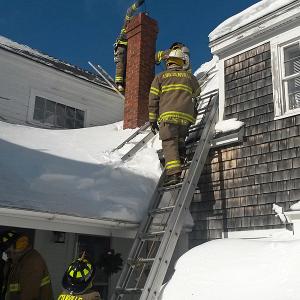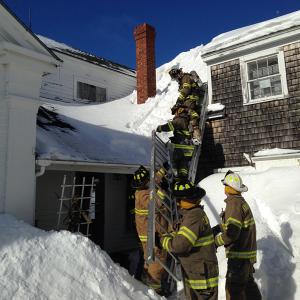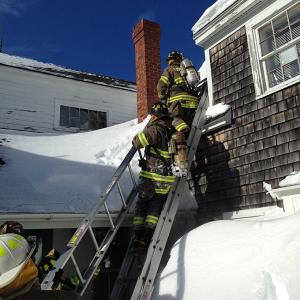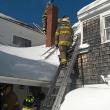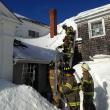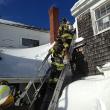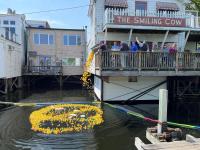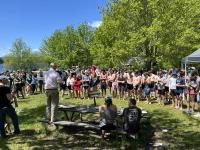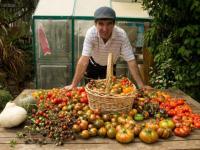Lincolnville chimney fire prompts safety message from Chief Ben Hazen
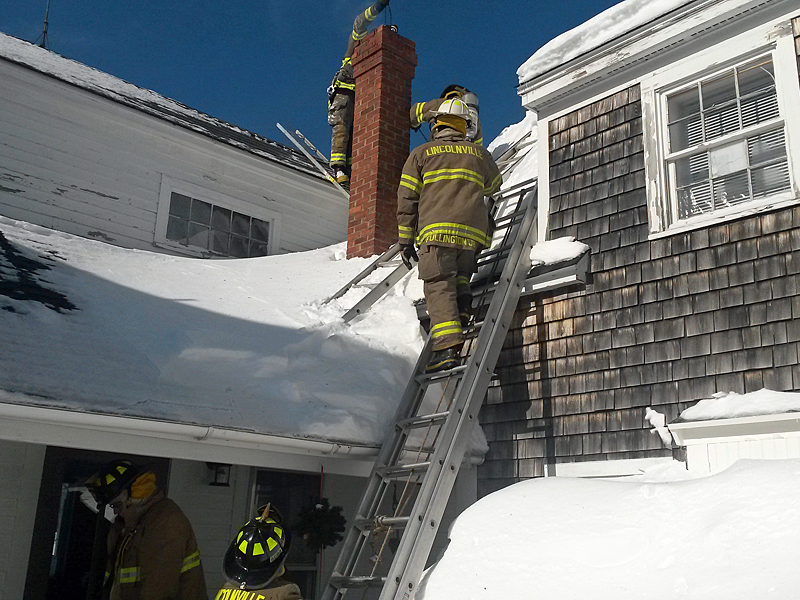 Due to the arrangement of the Yarnell’s roof lines, and the chimney, an attic ladder had to be used to allow Lincolnville firefighters to get above the chimney opening to drop a chain down and dislodge burning creosote inside. (Courtesy Lincolnville Fire Department)
Due to the arrangement of the Yarnell’s roof lines, and the chimney, an attic ladder had to be used to allow Lincolnville firefighters to get above the chimney opening to drop a chain down and dislodge burning creosote inside. (Courtesy Lincolnville Fire Department)
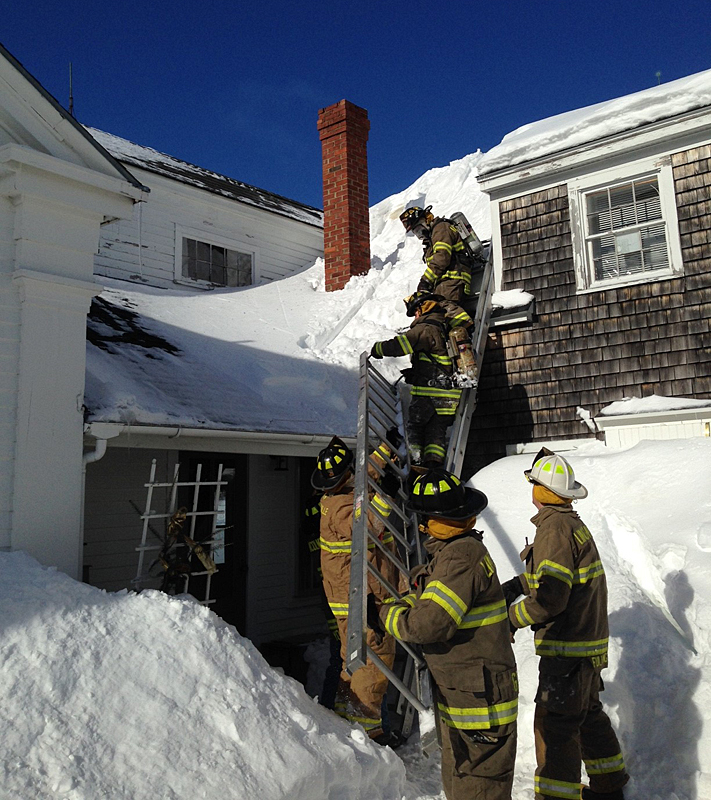 (Courtesy Lincolnville Fire Department)
(Courtesy Lincolnville Fire Department)
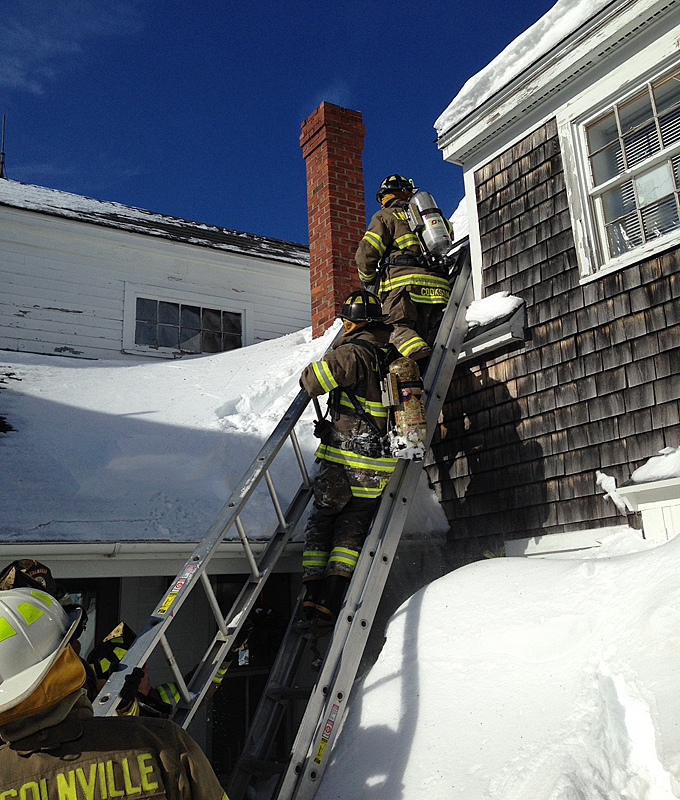 (Courtesy Lincolnville Fire Department)
(Courtesy Lincolnville Fire Department)
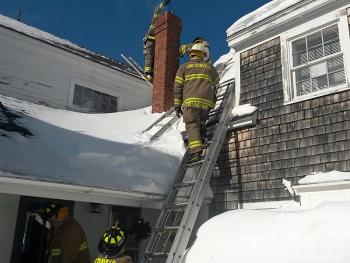 Due to the arrangement of the Yarnell’s roof lines, and the chimney, an attic ladder had to be used to allow Lincolnville firefighters to get above the chimney opening to drop a chain down and dislodge burning creosote inside. (Courtesy Lincolnville Fire Department)
Due to the arrangement of the Yarnell’s roof lines, and the chimney, an attic ladder had to be used to allow Lincolnville firefighters to get above the chimney opening to drop a chain down and dislodge burning creosote inside. (Courtesy Lincolnville Fire Department)
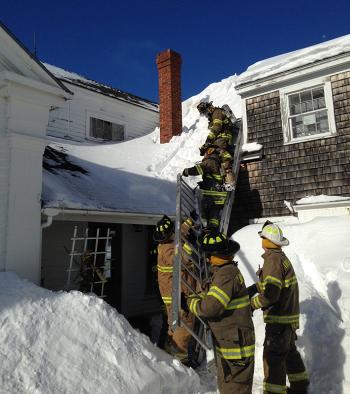 (Courtesy Lincolnville Fire Department)
(Courtesy Lincolnville Fire Department)
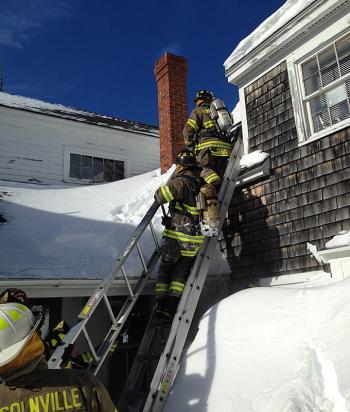 (Courtesy Lincolnville Fire Department)
(Courtesy Lincolnville Fire Department)
LINCOLNVILLE — About a dozen Lincolnville firefighters responded to the Yarnell home on Route 52 Wednesday morning, when a chimney fire took hold above a working wood stove.
Lincolnville Fire Chief Ben Hazen said the call came in at 9:14 a.m. and both residents were evacuated outside until firefighters got on scene and deemed it safe for them to go back inside.
"We had the fire out within 10 minutes, but it was a little tough to get to and chain it because we had to use an attic ladder against the roof," said Hazen. "We put a roof ladder up, but then had to use the attic ladder against the chimney because its location made it too tall for us to get above it to drop the chain down inside."
The location of the call was 2498 Belfast Road. Hazen said firefighters remained on scene until about 10 a.m.
"Excess buildup of creosote was more than likely the cause of the chimney fire," said Hazen.
As a word of advice, and caution, Hazen said he encourages people to "properly burn your wood stove," and not let it smolder. That means keeping the temperature inside the stove between 400 and 450 degrees Fahrenheit.
"When you burn it hotter, 400-450 degrees, you get rid of the creosote. At a higher temperature, you get better gas combustion, which keeps the creosote from building up," said Hazen. "Burning at a lower temperature, it’s a smoldering fire that causes creosote buildup."
Creosote buildup leads to more headaches, more cleanings and the increased possibility of chimney fires, which can extend to walls and floors of the home if they get hot enough and find a weak point.
Hazen also doesn't recommend burning pine, though he knows a lot of people like to use it as kindling.
"Pine causes more creosote than other woods, so you need to keep it at around 400 degrees all the time," said Hazen. "And some people who leave a wood stove burning all day, while they go out, like to damper it down when they leave the home, but burning at 250-300 degrees only makes it worse."
Those who clean their own chimneys to remove creosote buildup should be extra careful to clear snow off the roof before going up on a ladder to clean the chimney.
"Snow and ice buildup from ice damming cause slippery footing and the potential for a fall off the roof," said Hazen.
Two other safety precautions have to do with storage around the wood stove, and storage of ashes.
Hazen said as a firefighter, he has been in too many homes where people are stacking wood and kindling, cardboard boxes and newspaper too close to the chimney and the stove.
"I urge people not to do that, to keep those things at least 3-feet away, and don't lean wet wood against the chimney to dry it out," said Hazen. "You're asking for trouble."
As for fireplace and wood stove ashes, extra care must be taken to properly dispose and store them because they can retain heat for more than a week.
The ashes may feel cool on top and on the side of the metal can, but the bottom of the can may become hot, and cause a fire on whatever flooring it's sitting on, and the ashes inside, in the middle of the can, may still be hot to the touch and smoldering, waiting for an opportunity to ignite. Add a little breeze from a lid that's not properly sealed, and you have two elements to start a fire.
"Set the can outside of structures, not inside, and set it away from the house and anything that can catch fire in case the lid pops off," said Hazen.
Finally, Hazen said homeowners and residents can help in an emergency by making sure their house numbers are visible, and that mailboxes, with house numbers affixed, are cleared of snow and visible from the road.
"I know where a lot of places are, but I don't know where they all are, and it's your responsibility to make sure the numbers are clear and visible so we can find you," said Hazen.
Related link:
• National Fire Protection Association safe heating tips
Reach Editorial Director Holly S. Edwards at hollyedwards@penbaypilot.com
Event Date
Address
2498 Belfast Road
Lincolnville, ME
United States

